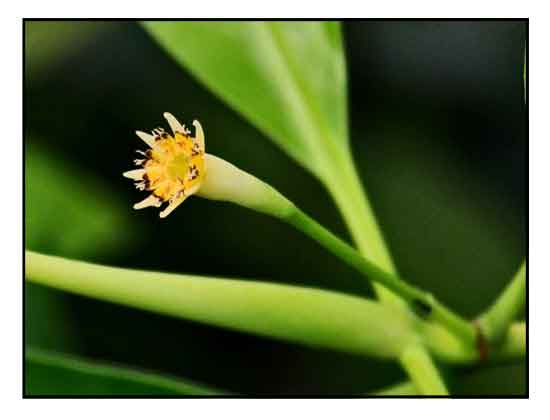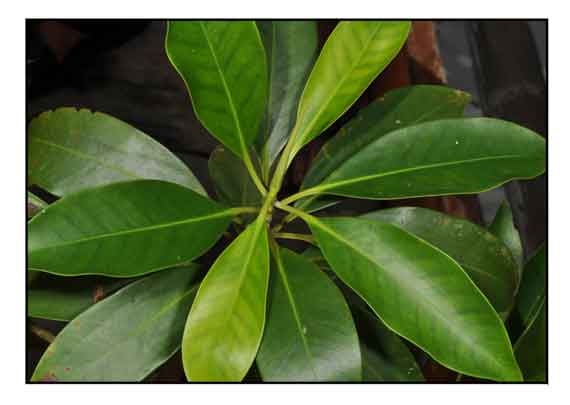
Family • Rhizophoraceae
Langarai
Bruguiera parviflora (Roxb.) Wight & Arn. ex Griff.
SMALL FLOWER BRUGUIERA
| Scientific names | Common names |
| Bruguiera parviflora (Roxb.) Wight & Arn. ex Griff. | Bakau (Trade name) |
| Bruguiera ritchiei Merr. | Langarai (Tag.) |
| Kanilia parviflora Blume | Black mangrove (New Guinea) |
| Rhizophora parviflora Roxb. | Small flower bruguiera (Engl.) |
| Rhizophora pauciflora Griff. | |
| Bruguiera parviflora (Roxb.) Wight & Arn. ex Griff. is an accepted name: Plants of the World Online | |
| Other vernacular names |
| MALAYSIA: Berus lenggadai. |
| MYANMAR: Byu-kyettet |
| THAILAND: Lang-kra-dai, Rang ka thae, Thua dam. |
| VIETNAM: Vet tach, Vejt tasch. |
| OTHERS: Lenggadai, Lenggadis, Mengkadai. |
Botany
Constituents Properties Studies Availability |
September 2022
![]()
 |
PHOTOS / ILLUSTRATIONS |
| IMAGE SOURCE: Photograph: Bunga lenggadai (Bruguiera parviflora). Dari Kotabaru, alimantan Selatan / Wibowo Djatmiko (Wie146) / CC by SA 3.0 / click on image to go to source page / Wikipedia |
| OTHER IMAGE SOURCE: / Photo / Rhizophoraceae : Bruguiera parviflora Twig / det. Jeffrey T Lobrio Rey / Copyright © 2012 by P.B. Pelser & J.F. Barcelona (contact: [email protected]) [ref. DOL48633] / Non-Commercial Use / Phytoimages.siu.edu |
Additional
Sources and Suggested Readings |
• |
DOI: It is not uncommon for links on studies/sources to change. Copying and pasting the information on the search window or using the DOI (if available) will often redirect to the new link page. (Citing and Using a (DOI) Digital Object Identifier) |
| List of Understudied Philippine Medicinal Plants |
• |
 |

 Gen info
Gen info Distribution
Distribution